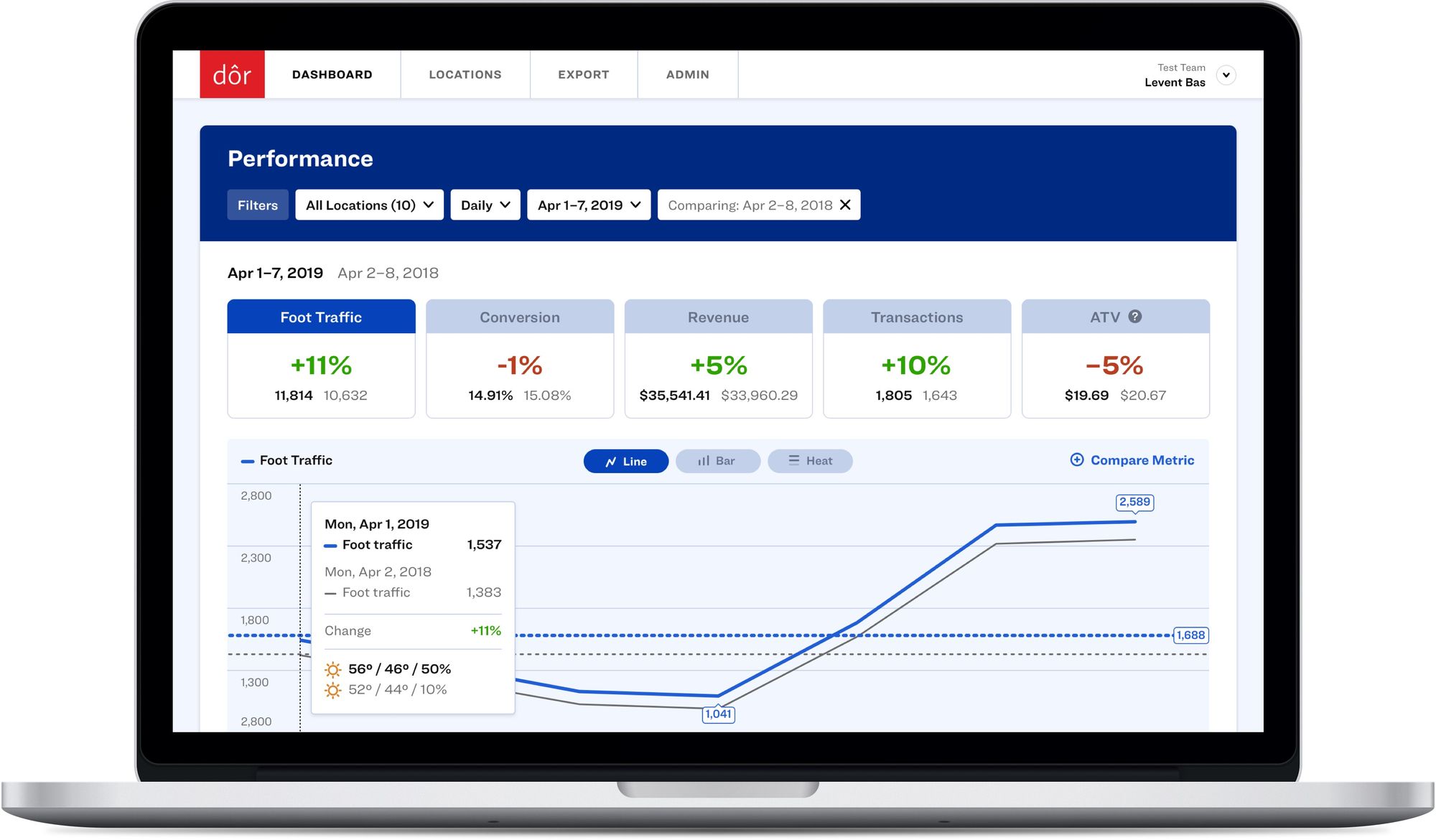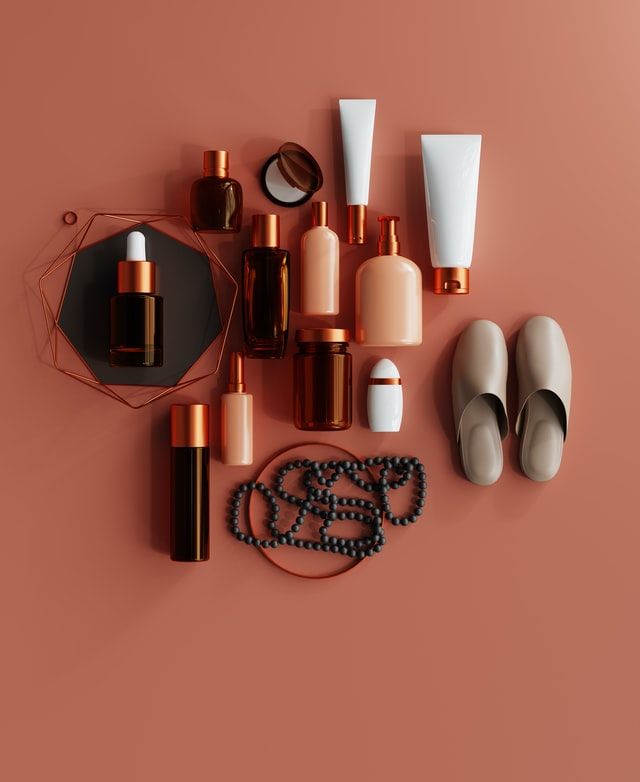The concept of impulse buying has been around for quite some time, but as customers are getting inundated with product advertisements more than they ever have before, many stores are finding that having just a few items near checkout isn’t enough anymore.
What’s more, e-commerce retailers have found their own clever ways of increasing impulse purchases, as well. Not to worry, as we’ve got some tried-and-tested ideas to help you take advantage of your physical space and maximize impulse buys at your brick-and-mortar store.

Did you know that a 1% increase in your store’s conversion rate can mean a 10% increase in revenue?
Click here to discover how Dor can help you understand your foot traffic data and make more profitable business decisions.
Ready to purchase? Complete your purchase in just minutes!
What's impulse buying in retail?
Impulse buying is the name given to purchased items that customers did not plan on buying when they first walked into your store. Often called “unplanned purchases,” impulse buys often happen at the last minute, when the customer is getting ready to leave the store.
Although impulse buys happen in both physical and e-commerce stores, brick-and-mortar has a clear advantage over online, as customers are able to see and touch the product in person.
The psychology behind impulse buying
Did you know that store size has an impact on how customers make impulse purchases? According to prior research on the topic, the main factor behind impulse buys in small stores is product pricing, while in larger stores, product displays are the main driver of such purchases.
Although most shoppers would like to believe they make all their purchase decisions rationally, impulse buying has a significant emotional component to it. That is why impulse purchases can be both a form of “therapy” if a customer is feeling a bit low, or it can be a celebration, as a way to “treat” oneself.
While the exact reasoning behind each impulse purchase will understandably be different, there are generally three main components that go into an impulse buy:
Value—No one can resist a good deal, and this is especially true when it comes to impulse buys. The feeling of getting good value out of an impulse buy is important to shoppers across the board.
Urgency—This is best defined as “fear of missing out” (FOMO). One of the most common ways retailers create a sense of urgency in customers is to use signage promoting limited-time sales, such as “today only” or “this weekend only.”
Novelty—There are also plenty of customers who subconsciously view impulse buys as a way to have new experiences, meaning that the sense of novelty will be most important to them. These types of customers also make the perfect target audience to test out new products.
15 tactics to encourage impulse buying
1. Know that positioning matters
When it comes to showcasing your impulse buy items in your store, it’s crucial that you pay attention to where they’re located. The checkout area is popular for a reason, as customers inevitably make their way there to make their planned purchases, and they often have a few moments to look around while waiting for the cashier.
Another great place to position impulse purchases is near areas where your customers frequently congregate. Depending on the size and type of your retailer, this could be near your bestsellers, around seasonal displays, or close to in-trend, new-season items.
2. Keep products at eye level
Another key aspect to properly displaying your impulse buy items is to ensure that they are easily visible to your customers—meaning they are positioned neither too high nor too low for the average customer.
3. Grab shoppers’ attention through signage
Let’s say you’ve found the perfect place for your impulse buy items—the next step is to guide your customers’ attention toward them, which is best done using colorful signage that grabs the eye. When it comes to your color of choice, it’s a good idea to stick to your brand’s color scheme—but if that doesn’t apply to your retailer (or you’re at a loss as to which color you should choose), you can always opt for red to ensure that your signage is eye-catching.

4. Pay attention to packaging
Similar to signage, the packaging on your products will also have an impact on your impulse sales. If you are the type of retailer to create its own packaging, consider the target audience for your products and design accordingly. As a general rule of thumb, sleek packaging with a minimal design will make your products appear more high-end, while shiny packages will immediately draw the eye and make whatever item they’re covering instantly more “fun.”
5. Make it affordable
Pricing is another major point to consider, as impulse buys tend to be affordably priced items. Think of the type of products available near the checkout area in most retailers: they’re often small and inexpensive, making it easier for the customer to justify throwing them in with the rest of their purchase at the last minute. If your retailer doesn’t normally offer cheap items, consider creating travel-sized versions of your regular-sized products to appeal to impulse buyers.
6. Try bundled pricing
It’s important that customers feel they’re getting a good deal, so why not bundle your impulse buy items together and offer them at a single, affordable price? Another way to do bundled pricing is to offer “buy one get one” (BOGO) or “buy two get one free” deals on these products, as these types of deals are near irresistible to impulse shoppers looking for good value.
7. Give cross-merchandising a go
Another good way to encourage impulse purchases is to cross-merchandise or to pair them with complementary items that you know your customers often buy. For instance, if you’re a shoe store whose leather shoes are popular with shoppers, displaying shoe polish nearby can easily help you move these small and affordable products as impulse purchases.
8. Tell a story
As an alternative to cross-merchandising, you can create a bespoke section, with a clear message, for the impulse buy items. For example, you may sell athletic gear in your store year-round, but if you showcase them in January with a “New Year, New You” type of message, they’ll remind people of their New Year’s resolutions and give further incentive for customers to grab them.
9. Don’t underestimate the impact of food & drink
Another fail-safe method to generate more impulse purchases is to sell food and drink items in your store. The options here are limitless and can range from bottled water and packaged snacks to a dedicated café selling lattes and freshly made treats, all depending on the size and type of your retailer as well as your clientele.
10. Get your staff involved
Since your staff is already interacting with your customers, why not rally them to the cause to boost impulse sales? Train your staff to suggest a complementary product to the one the customer asks about or has already picked up, and you just might see those impulse purchases increase.
11. Use social proof
As we mentioned above, FOMO is a big factor in why people make impulse purchases—so use it to your advantage. Whether it’s signage that claims “these are our bestsellers” or images of celebrities using your product, use subtle ways to communicate to your customers that’ll be “left out” without this item.
12. Invest in high-quality photography
While we’re on the topic of FOMO, another good method to incentivize shoppers to buy on an impulse is to show the product in use through photography. After all, they say a picture is worth a thousand words, so showing happy people enjoying the product can do wonders to move your impulse buys.
13. Consider investing in interactive displays
If you’ve got the budget for it, you can take your impulse buy promotion up a notch by investing in interactive displays, which allow shoppers to browse through or customize your brand’s products. Since customers will be engaging with your display, you can promote lower-priced impulse buys as accessories or add-ons to the main item they’re eyeing.
14. Use the internet to your advantage
Whether you’re the type of retailer to routinely send out email blasts or you just have an Instagram account, use your online presence to drum up your impulse sales. By featuring these items on your emails or social media posts, you can familiarize your customer base with these products before they even walk into your store—making it even more likely that they’ll be unable to resist the temptation to buy them once they see the item in person.
15. Reward customers for their impulse purchases
Take a cue from fast fashion stores and offer rewards or discounts to encourage impulse purchases. As an example; if a customer knows she can get a discount once she spends $200, but the items she’s picked out so far are worth $190, you’d better believe most customers are going to opt for a $10 impulse purchase to go “all the way” and get their reward.